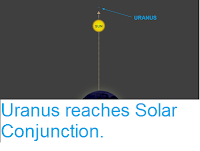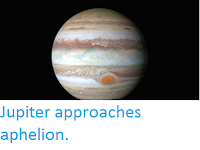At 1.24 am GMT on Friday 26 May 2017 the Moon will be at its closest
point to the Earth in 2017, at a distance of 357 209 km. his will fall five hours and forty minutes after the New Moon, at 7.644 pm on Thursday 25 May, making it effectively invisible. The Moon completes one orbit about the Earth every 27.5
days, and like most orbiting bodies, its orbit is not completely
circular, but slightly elliptical, so that the distance between the two
bodies varies by about 3% over the course of a month. This elliptical
orbit is also not completely regular, it periodically elongates then
returns to normal, making some perigees closer than others. These cycles
mean that the Moon reached its furthest point from the Earth
(apogee) of the year in the same lunar cycle, 406 401 km at 7.52 pm GMT
on Thursday 8 June, which will be the second most distant Lunar Apogee of 2017.
Simplified diagram of the Moon's orbit. NASA.
Although this is the closest point to the Earth that the Moon has
reached this year, it is not exceptional. The Moon reached 356 511 km from the
Earth on 14 November 2016, and will reach 357 122 km from the Earth on 10 March 2020.
See also...
Follow Sciency Thoughts on Facebook.







